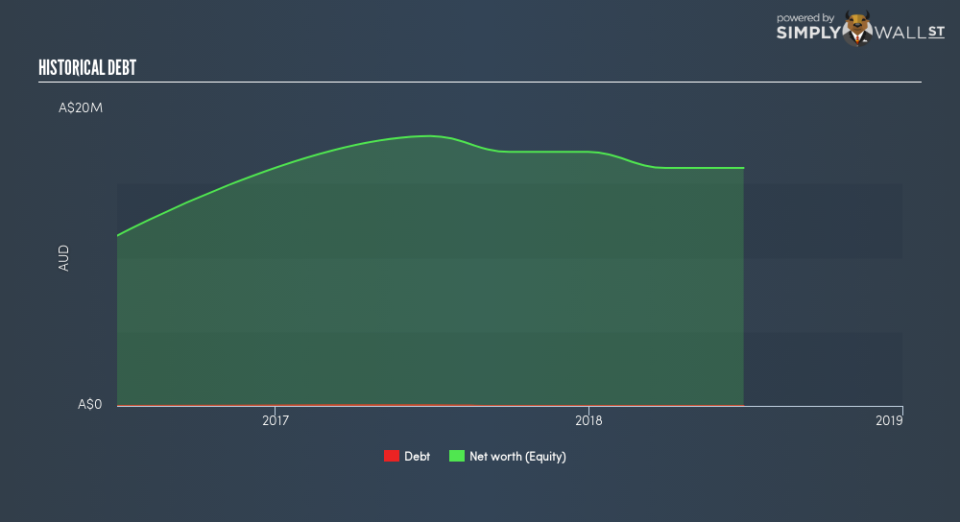Is Integrated Payment Technologies Limited’s (ASX:IP1) Balance Sheet A Threat To Its Future?

Integrated Payment Technologies Limited (ASX:IP1), which has zero-debt on its balance sheet, can maximize capital returns by increasing debt due to its lower cost of capital. However, the trade-off is IP1 will have to follow strict debt obligations which will reduce its financial flexibility. While IP1 has no debt on its balance sheet, it doesn’t necessarily mean it exhibits financial strength. I will take you through a few basic checks to assess the financial health of companies with no debt.
Check out our latest analysis for Integrated Payment Technologies
Want to help shape the future of investing tools and platforms? Take the survey and be part of one of the most advanced studies of stock market investors to date.
Is IP1 growing fast enough to value financial flexibility over lower cost of capital?
Debt capital generally has lower cost of capital compared to equity funding. But the downside of having debt in a company’s balance sheet is the debtholder’s higher claim on its assets in the case of liquidation, as well as stricter capital management requirements. IP1’s absence of debt on its balance sheet may be due to lack of access to cheaper capital, or it may simply believe low cost is not worth sacrificing financial flexibility. However, choosing flexibility over capital returns is logical only if it’s a high-growth company. IP1 delivered a negative revenue growth of -16%. While its negative growth hardly justifies opting for zero-debt, if the decline sustains, it may find it hard to raise debt at an acceptable cost.
Can IP1 pay its short-term liabilities?
Given zero long-term debt on its balance sheet, Integrated Payment Technologies has no solvency issues, which is used to describe the company’s ability to meet its long-term obligations. But another important aspect of financial health is liquidity: the company’s ability to meet short-term obligations, including payments to suppliers and employees. With current liabilities at AU$598k, it seems that the business has maintained a safe level of current assets to meet its obligations, with the current ratio last standing at 4.18x. Having said that, a ratio above 3x may be considered excessive by some investors.
Next Steps:
As a high-growth company, it may be beneficial for IP1 to have some financial flexibility, hence zero-debt. This may mean this is an optimal capital structure for the business, given that it is also meeting its short-term commitment. Going forward, its financial position may change. I admit this is a fairly basic analysis for IP1’s financial health. Other important fundamentals need to be considered alongside. I recommend you continue to research Integrated Payment Technologies to get a better picture of the stock by looking at:
Historical Performance: What has IP1’s returns been like over the past? Go into more detail in the past track record analysis and take a look at the free visual representations of our analysis for more clarity.
Other High-Performing Stocks: Are there other stocks that provide better prospects with proven track records? Explore our free list of these great stocks here.
To help readers see past the short term volatility of the financial market, we aim to bring you a long-term focused research analysis purely driven by fundamental data. Note that our analysis does not factor in the latest price-sensitive company announcements.
The author is an independent contributor and at the time of publication had no position in the stocks mentioned. For errors that warrant correction please contact the editor at editorial-team@simplywallst.com.


